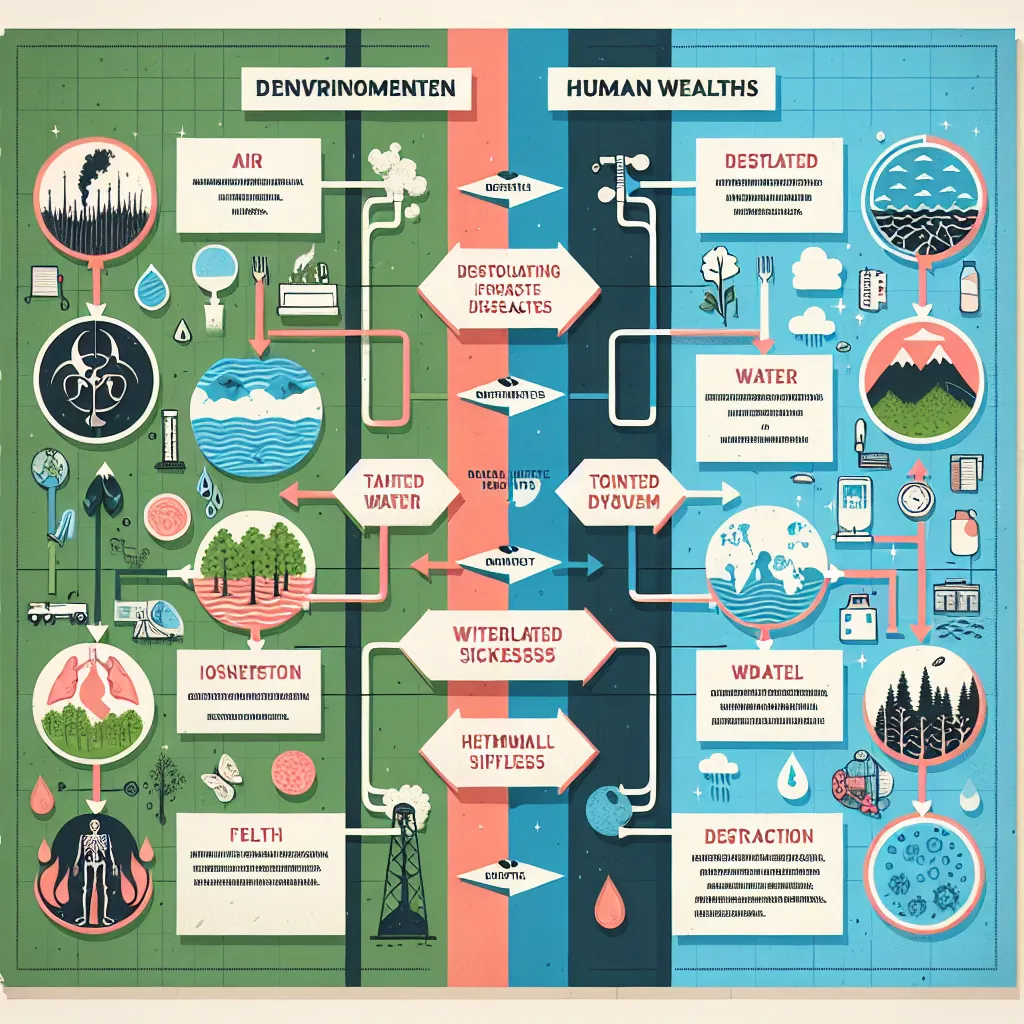The IELTS Reading section tests your ability to understand complex texts and answer questions accurately. One topic that has gained significant attention in recent years and is likely to appear in future IELTS exams is the impact of climate change on global migration patterns. This subject has been featured in several past IELTS tests and remains highly relevant due to its ongoing global significance.
Table Of Contents
In this practice session, we’ll explore a reading passage on this crucial topic, providing you with an opportunity to enhance your skills and prepare for potential questions in your upcoming IELTS exam. Let’s dive into a comprehensive reading exercise that mirrors the format and difficulty level you might encounter on test day.
Reading Passage
Climate Change and Human Migration: A Growing Global Challenge
Climate change is rapidly emerging as one of the most significant challenges of the 21st century, with far-reaching consequences that extend beyond environmental concerns. One of the most pressing issues arising from this global phenomenon is its impact on human migration patterns. As extreme weather events become more frequent and severe, and long-term environmental changes render certain areas uninhabitable, millions of people are being forced to leave their homes in search of safety and stability.
The relationship between climate change and migration is complex and multifaceted. While it’s challenging to attribute any single instance of migration solely to climate change, there is growing evidence that environmental factors play a significant role in population movements worldwide. According to the World Bank, by 2050, climate change could force more than 140 million people to migrate within their countries in Sub-Saharan Africa, South Asia, and Latin America alone.
One of the most immediate and visible impacts of climate change on migration is the displacement caused by extreme weather events. Hurricanes, floods, and wildfires, which are becoming more intense and frequent due to global warming, can destroy homes and infrastructure, leaving entire communities with no choice but to relocate. For instance, Hurricane Maria in 2017 led to the displacement of thousands of Puerto Ricans, many of whom migrated to the mainland United States.
 Hurricane Maria Aftermath
Hurricane Maria Aftermath
However, it’s not just sudden disasters that drive climate-induced migration. Slow-onset environmental changes, such as sea-level rise, desertification, and changing precipitation patterns, can gradually make areas uninhabitable or unable to support traditional livelihoods. Small island nations in the Pacific, like Kiribati and Tuvalu, are already facing existential threats from rising sea levels, forcing their governments to consider relocating entire populations.
The agricultural sector is particularly vulnerable to climate change, and its impacts on food security can trigger significant migration flows. Changes in temperature and rainfall patterns can lead to crop failures and livestock losses, pushing rural communities to seek alternative livelihoods in urban areas or other countries. This rural-to-urban migration can exacerbate existing challenges in cities, such as overcrowding, inadequate infrastructure, and social tensions.
Climate-induced migration also has important geopolitical implications. As people cross borders in search of habitable land and economic opportunities, it can strain international relations and challenge existing legal frameworks. The current international refugee regime, as defined by the 1951 Refugee Convention, does not recognize environmental factors as grounds for refugee status, leaving so-called “climate refugees” in a legal limbo.
Addressing the challenges posed by climate-induced migration requires a multifaceted approach. Mitigation efforts to reduce greenhouse gas emissions are crucial to limit the extent of future climate change and its impacts on human mobility. Simultaneously, adaptation strategies are needed to help vulnerable communities become more resilient to environmental changes, potentially reducing the need for migration.
International cooperation is essential in managing climate-induced migration. This includes developing new legal frameworks to protect the rights of environmental migrants, providing financial and technical assistance to vulnerable countries, and ensuring that migration can occur in a safe, orderly, and dignified manner when it becomes necessary.
In conclusion, the impact of climate change on global migration patterns is a complex and growing challenge that requires urgent attention from policymakers, researchers, and the international community. As the effects of climate change continue to unfold, understanding and addressing its influence on human mobility will be crucial for maintaining global stability and protecting the rights and well-being of millions of people worldwide.
Questions
True/False/Not Given
Determine whether the following statements are True, False, or Not Given based on the information in the passage.
- Climate change is expected to cause the migration of over 140 million people within their own countries by 2050.
- The 1951 Refugee Convention includes provisions for people displaced by environmental factors.
- Small island nations in the Atlantic Ocean are at the greatest risk from rising sea levels.
- Climate-induced migration is primarily caused by sudden extreme weather events rather than gradual environmental changes.
- International cooperation is unnecessary in addressing climate-induced migration challenges.
Multiple Choice
Choose the correct letter, A, B, C, or D.
-
According to the passage, which of the following is NOT mentioned as a cause of climate-induced migration?
A) Desertification
B) Sea-level rise
C) Volcanic eruptions
D) Changing precipitation patterns -
The agricultural sector is vulnerable to climate change because:
A) It relies heavily on fossil fuels
B) It is the largest contributor to greenhouse gas emissions
C) Changes in temperature and rainfall can lead to crop failures
D) Farmers are unwilling to adopt new technologies
Matching Headings
Match the following headings to the correct paragraphs in the passage. Write the correct number (i-vii) next to questions 8-11.
i. Legal challenges for climate migrants
ii. The scale of climate-induced migration
iii. Impact on agriculture and urban areas
iv. Types of environmental changes causing migration
v. Geopolitical consequences of climate migration
vi. Strategies for addressing climate-induced migration
vii. The complexity of climate change and migration
- Paragraph 2 __
- Paragraph 5 __
- Paragraph 6 __
- Paragraph 7 __
Summary Completion
Complete the summary below using words from the box. Write the correct letter (A-L) next to questions 12-15.
A) mitigation B) adaptation C) cooperation D) refugee
E) urban F) rural G) extreme H) gradual
I) economic J) social K) legal L) political
Climate change affects migration through both (12)__ weather events and (13)__ environmental changes. This can lead to significant (14)__ to (15)__ migration, causing various challenges in cities.
Answer Key
- True
- False
- Not Given
- False
- False
- C
- C
- vii
- iii
- v
- vi
- G
- H
- F
- E
Explanations
- True – The passage explicitly states this information in the second paragraph.
- False – The passage mentions that the 1951 Refugee Convention does not recognize environmental factors as grounds for refugee status.
- Not Given – The passage mentions Pacific island nations but does not compare them to Atlantic islands.
- False – The passage discusses both sudden events and gradual changes as causes of migration.
- False – The passage emphasizes the importance of international cooperation in addressing these challenges.
- C – Volcanic eruptions are not mentioned in the passage as a cause of climate-induced migration.
- C – The passage directly states this as a reason for the agricultural sector’s vulnerability.
- vii – This paragraph discusses the complex relationship between climate change and migration.
- iii – This paragraph focuses on how climate change affects agriculture and leads to urban migration.
- v – This paragraph discusses the geopolitical implications of climate-induced migration.
- vi – This paragraph outlines strategies for addressing climate-induced migration challenges.
- G – “Extreme” weather events are mentioned as one cause of migration.
- H – “Gradual” environmental changes are also discussed as a cause of migration.
- F – The passage mentions “rural-to-urban migration” as a consequence of climate change impacts on agriculture.
- E – “Urban” completes the phrase “rural-to-urban migration” in this context.
Common Mistakes to Avoid
- Misinterpreting “Not Given” answers: Remember, “Not Given” means the information is neither confirmed nor contradicted in the passage.
- Overlooking key words: Pay attention to qualifiers like “most,” “all,” or “only” which can change the meaning of a statement.
- Falling for distractors: In multiple choice questions, all options may seem plausible, but only one is correct based on the passage.
- Relying on prior knowledge: Base your answers solely on the information provided in the passage, not on external knowledge.
- Mismatching headings: Ensure you understand the main idea of each paragraph before matching it with a heading.
Vocabulary
Here are some challenging words from the passage along with their definitions:
- Multifaceted (adjective) /ˌmʌl.tiˈfæs.ɪ.tɪd/: Having many different aspects or features.
- Existential (adjective) /ˌeɡ.zɪˈsten.ʃəl/: Relating to existence, especially human existence.
- Geopolitical (adjective) /ˌdʒiː.əʊ.pəˈlɪt.ɪ.kəl/: Relating to politics, especially international relations, as influenced by geographical factors.
- Mitigation (noun) /ˌmɪt.ɪˈɡeɪ.ʃən/: The action of reducing the severity, seriousness, or painfulness of something.
- Resilient (adjective) /rɪˈzɪl.i.ənt/: Able to withstand or recover quickly from difficult conditions.
Grammar Focus
Pay attention to the use of conditional sentences in the passage, particularly the second conditional:
- “If global temperatures continue to rise, more people will be forced to migrate.”
Structure: If + present simple, will + infinitive
This structure is used to talk about possible future scenarios and their consequences.
Tips for IELTS Reading Success
- Time management: Allocate your time wisely across all sections of the reading test.
- Skim and scan: Quickly identify key information without reading every word.
- Understand question types: Familiarize yourself with various IELTS question formats.
- Practice regularly: Use authentic IELTS materials to improve your reading speed and comprehension.
- Develop your vocabulary: Learn new words in context, focusing on academic and topic-specific terminology.
- Read actively: Engage with the text by underlining key points and making mental summaries.
- Pay attention to transition words: These can help you understand the structure and flow of ideas in the passage.
Remember, success in IELTS Reading comes with consistent practice and a strategic approach. Focus on understanding the overall message of the passage while being attentive to specific details required by the questions. By regularly practicing with diverse topics like the effects of climate change on food security and climate change’s influence on migration to urban areas, you’ll be well-prepared for any subject that appears in your IELTS exam.


